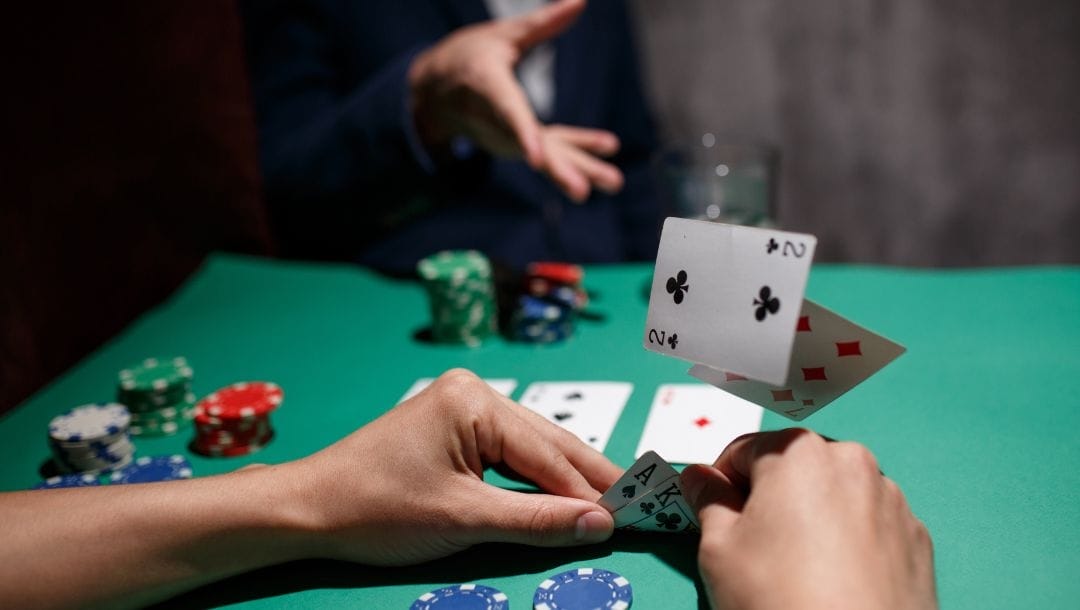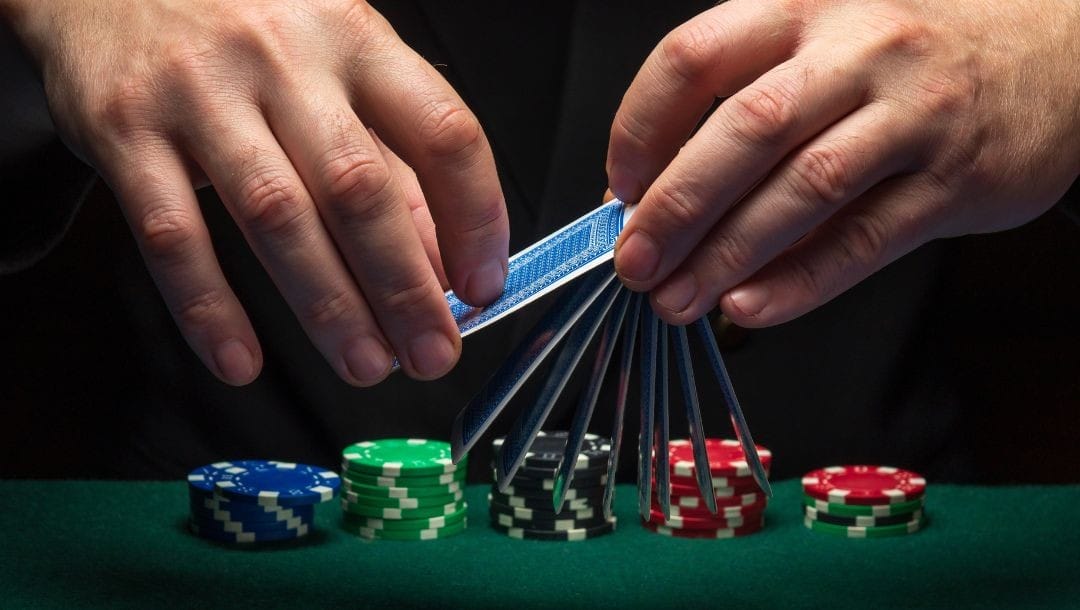
If you want to know how to play Texas Hold’em poker with any measure of success, you need to master raising, calling and folding. Of these three actions, the one that tends to receive the least attention is folding. Many players perceive folding to be akin to surrendering your position to the enemy — an ignoble defeat. Properly done, however, folding is an art that can deliver value in the long run. This article outlines the basics of when to hold them or fold them in online Texas Hold’em.
Poker Folding Defined
In poker, folding simply means giving up your hand and withdrawing from the pot when you don’t want to match the current bet. It’s critically important to know when to fold when you’re playing Texas Hold’em online. The alternative — fighting to the death in every hand out of cussedness or curiosity (a common rookie poker mistake) — is likely to cost you a great deal of money. But it’s not that easy to know when exactly to fold because every scenario is different. There are multiple factors to consider, including the bet size, the board texture, your hand strength, your position and your opponent’s range.
Automatic Poker Folds

With some starting hands, folding should be virtually automatic every time — for the majority of players, at least. Expert players may have their ways of turning the most unprofitable hand to their advantage, but on the basis of common sense and probability, there are a bunch of hands you can junk without worrying about whether you’d have profited from them in the long run. To put it differently, these hands always lose money on average if you enter the pot with them. Without further ado, here they are:
- Any hand with a 2, 3, 4, 5 or 6 unless it’s a pair or ace suited.
- Any hand with a 7, unless it’s a pair, 7-8 suited or ace suited.
- Any hand with an 8, unless it’s a pair or 7-8, 8-9, 8-10 or ace suited.
- Any hand with a 9, unless it’s a pair, 8-9, 9-10, 9-jack, 9-queen, 9-king or ace suited.
And the reverse? As a general rule, you should always be playing hands that provide the best chance to complete high pairs, flushes and high straights. That means playing high pairs, high suited and high unsuited cards. Never fold four of a kind, straight flush or royal flush.
Position
One of the most important variables when it comes to folding correctly poker is position. Preflop, if you’re in early position or in the blinds, you should fold pretty much everything except the very best hands: Pocket aces, kings, queens, ace-king and ace-queen suited. In middle position, you can broaden this range to include pocket 8s, 9s and 10s and a couple more suited high cards. In late position, you can open up your range, but always consider the overall situation. If the pot is raised, you’ll end up folding lower suited connectors and smaller pairs after the flop in the majority of cases.
If you’re serious about poker, it’s a good idea to learn the raising ranges for every table position so you know which cards to raise and which to fold when the action comes to you. Start by studying the best and worst Texas Hold’em starting hands.
Postflop

Postflop, the art of folding really comes into its own because there are so many variables at play. This is when your opponent’s range and the size of the pot become important. Unless you’re holding a monster, if you’re facing a tight player who seldom bluffs and they make a big bet, it’s time to fold. That goes double for triple-barrel river bets against similar opponents. Passive players who start betting aggressively are also sending the message to be cautious, as are recreational players who overbet the pot. These scenarios are rarely bluffed.
Too Weak To Continue
Sometimes you need to evaluate your hand strength and throw in the towel if necessary. Hands to treat with caution include pocket pairs when two or more overcards hit the flop, bottom pair versus large bets, draws that lack the odds to call and hands without pairs that lack any draw potential. These hands will be dominated by any player with a reasonable range. The exception would be against an opponent who you know bluffs much too often.
There are also some hands that ordinarily would be very strong but can be vulnerable to board texture. These include three of a kind, straight, flush and full house. The odds are that a flush on an unpaired board will be the best hand, but a paired or double-paired board reduces the value of your flush considerably. Be especially cautious of aggressive opponents in such situations.
Play Texas Hold’em Online at BetMGM
Keen to test the theory? Register at BetMGM to play Texas Hold’em online against like-minded players any time, anywhere and on any device. Play cash games at stakes to suit your bankroll and take part in daily, weekly and monthly poker tournaments. In between games, the online casino has a broad range of online slots and casino table games to keep you entertained, including live dealer variations. Get your best game on at BetMGM.
Increase your online poker profits by learning when to hold them or fold them in Texas Hold’em. Read on for best practices and practical tips.


